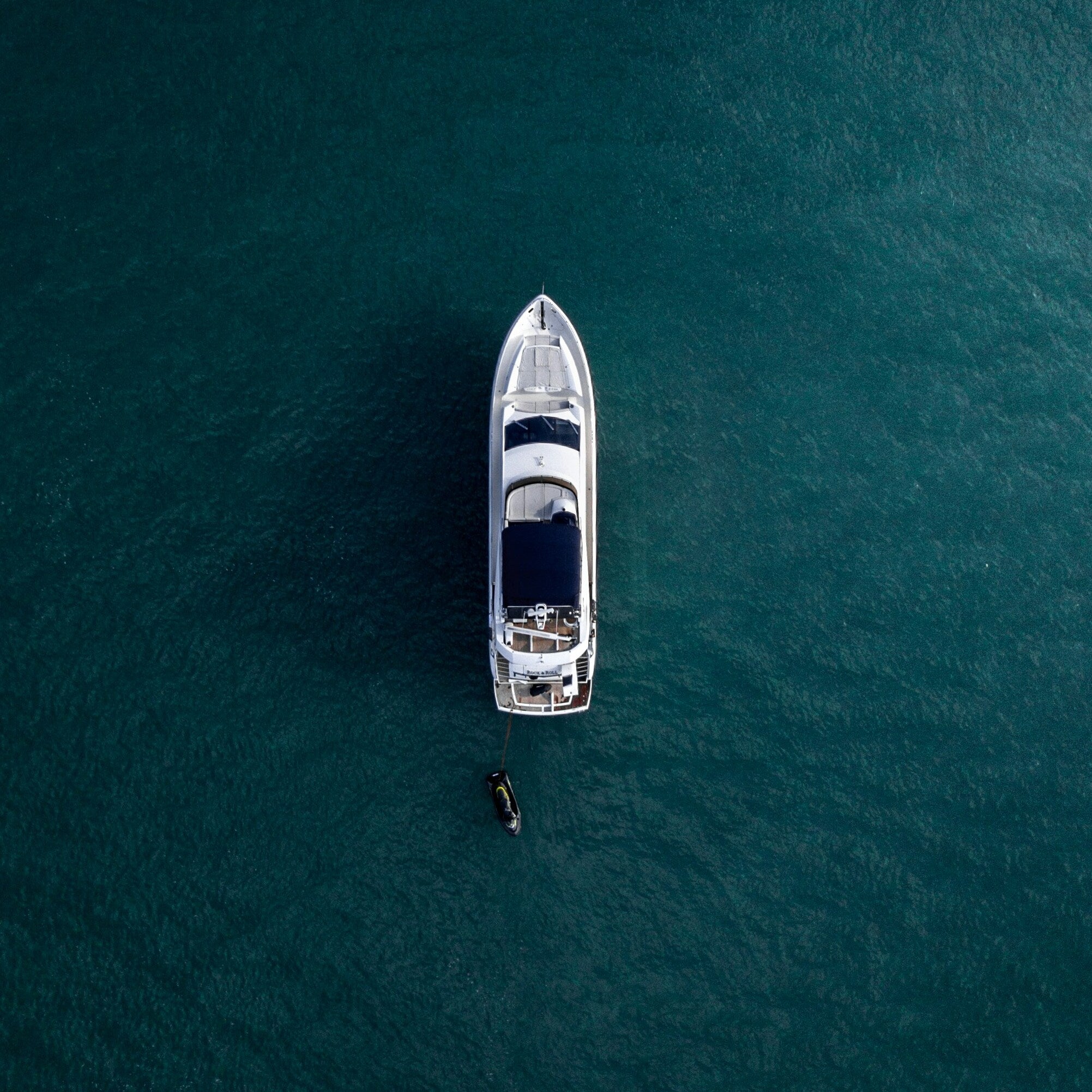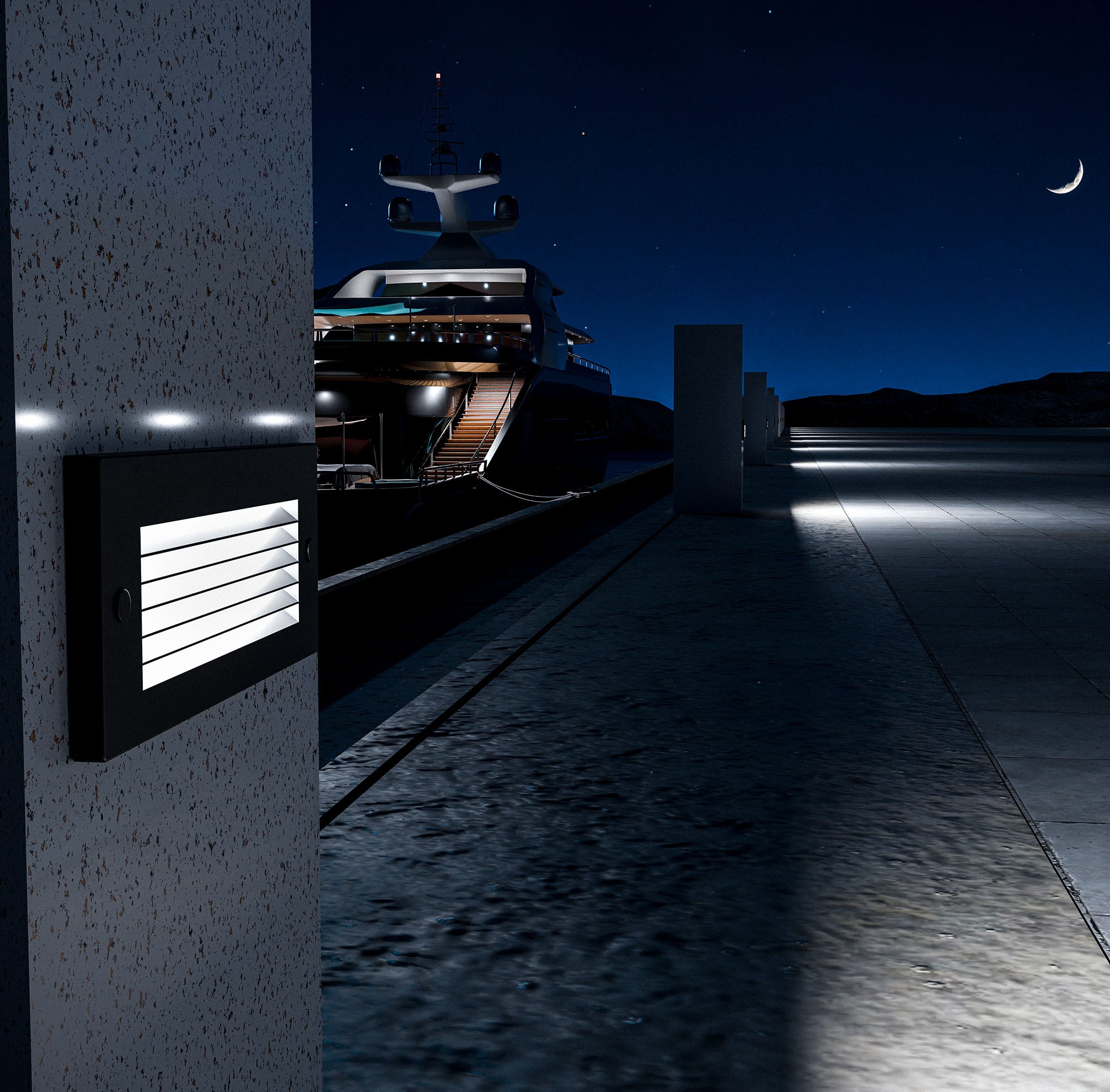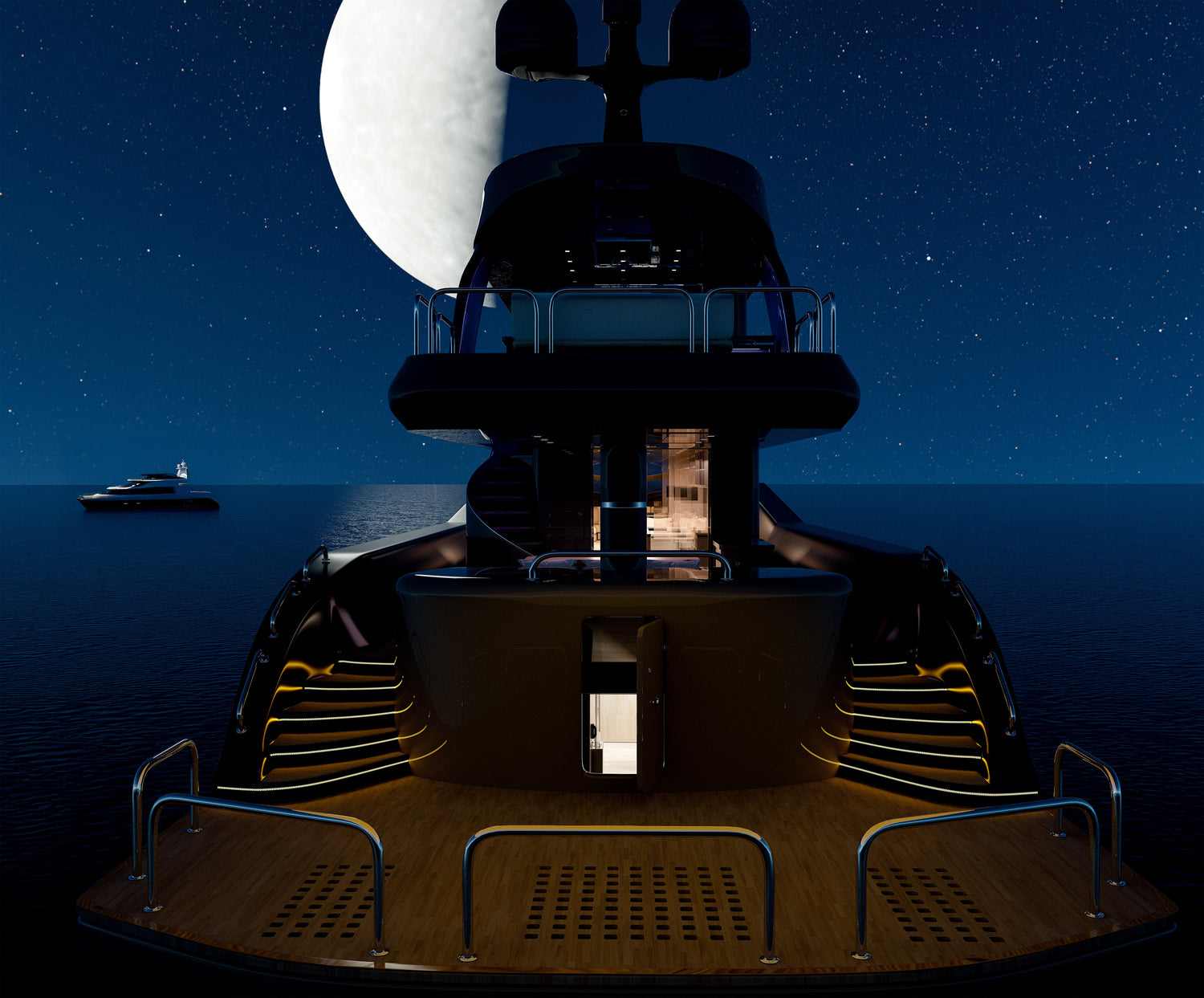Nighttime brings a unique set of challenges for boat owners, as reduced visibility and limited activity create opportunities for theft, vandalism, and unauthorized access. Whether docked at a marina, anchored offshore, or stored in a boatyard, vessels become vulnerable under the cover of darkness. While traditional lighting systems provide some level of security, they often fall short in terms of energy efficiency, durability, and adaptability to changing conditions.
LED motion-sensor lights have emerged as a game-changing solution for nighttime boat security. These fixtures combine advanced sensor technology with energy-efficient LED lighting, offering instant illumination in response to movement. They not only deter potential intruders but also improve visibility for onboard inspections, maintenance, and surveillance systems.
In this blog, we’ll explore how LED motion-sensor lights can enhance nighttime boat security, where they should be installed, and how to optimize their performance for maximum protection.
The Importance of Nighttime Boat Security
Increased Vulnerability After Dark
Nighttime conditions naturally reduce visibility, providing cover for intruders and making it harder for boat owners or marina staff to detect suspicious activity. Boats are often loaded with high-value equipment, including navigation systems, communication devices, and personal belongings, making them attractive targets for theft. Additionally, fuel reserves and easily detachable components, such as propellers and batteries, are often stolen due to their resale value.
LED motion-sensor lights play a crucial role in eliminating dark zones, ensuring that any unauthorized movement triggers immediate illumination. Bright, focused lighting creates a psychological deterrent, making potential intruders think twice before approaching a vessel.
Limited Surveillance and Monitoring
While security cameras are a staple of modern boat security, their effectiveness is heavily dependent on adequate lighting. Poorly lit areas create shadows and blind spots, reducing the camera’s ability to capture clear footage. Furthermore, relying solely on cameras without integrating a lighting solution means that intrusions are often noticed only after the damage is done.
LED motion-sensor lights address these gaps by activating instantly when motion is detected, drawing attention to suspicious activity and improving the visibility of surveillance footage.
Preventing Accidental Damage
Navigating a boat deck or dock at night can be hazardous without proper lighting. Poor visibility increases the risk of accidental damage caused by tripping, slipping, or misjudging distances. Whether it’s during nighttime inspections, routine maintenance, or emergency responses, motion-activated LED lights ensure clear visibility, reducing the risk of accidents and costly repairs.
What Are LED Motion-Sensor Lights and How Do They Work?
How Motion-Sensor Technology Functions
LED motion-sensor lights are equipped with advanced sensing technologies, such as Passive Infrared (PIR) sensors and microwave sensors, to detect movement within a specific range. PIR sensors detect changes in infrared radiation caused by heat emitted from humans or animals, while microwave sensors use electromagnetic waves to detect motion.
When movement is detected, the sensor triggers the LED light to activate instantly, flooding the area with bright illumination. After a set period of inactivity, the light automatically turns off, conserving energy and extending the fixture's lifespan.
The Benefits of LED Technology in Security Lighting
LED lights are known for their high energy efficiency, long operational life, and superior brightness compared to traditional lighting options like halogen or incandescent bulbs. They consume less power while delivering higher lumen output, ensuring that even large areas are well-illuminated without draining onboard power supplies.
Additionally, LEDs produce minimal heat, reducing fire risks and ensuring consistent performance even in enclosed or tight spaces.
Instant Illumination and Intruder Deterrence
The instant activation of LED motion-sensor lights serves as both a practical and psychological deterrent. Bright, sudden illumination catches intruders off guard, drawing attention to their presence and often prompting them to abandon their plans. For boat owners and marina staff, this instant activation provides immediate awareness of suspicious activity, allowing for a swift response.
Key Areas to Install LED Motion-Sensor Lights on Boats
Entry Points and Access Hatches
Entry points, including doors, companionways, and access hatches, are common targets for unauthorized entry. These zones require targeted illumination to prevent intruders from approaching undetected. Installing LED motion-sensor lights near these access points ensures immediate activation when someone attempts to tamper with locks or gain entry.
The focused beam of motion-activated lights eliminates shadows, exposes potential hiding spots, and ensures these critical areas remain well-monitored at all times.
Deck and Walkway Areas
Boat decks and walkways are high-traffic zones where visibility is essential for both security and safety. Without proper lighting, these areas become prone to accidental slips, falls, and unnoticed intrusions. Motion-activated LED lights installed along walkways and deck edges illuminate these zones as soon as movement is detected.
This not only prevents accidents but also ensures that any unauthorized movement across the deck is immediately brought to attention.
Storage Compartments and Lockers
Storage compartments often house valuable tools, spare parts, and personal belongings, making them attractive targets for theft. Installing compact motion-sensor LED lights inside these compartments ensures they are illuminated when accessed.
This lighting not only enhances security but also improves convenience for boat owners performing nighttime checks or retrieving equipment in low-light conditions.
Perimeter and Railings
The perimeter of the boat, including railings and outer edges, is an important area to secure. Motion-sensor floodlights mounted along these boundaries create a visible deterrent for anyone attempting to board the vessel undetected.
Adjustable floodlights with wide beam angles can cover large perimeter zones effectively, reducing the likelihood of intruders finding unmonitored access points.
Advantages of Using LED Motion-Sensor Lights for Boat Security
Energy Efficiency for Long-Term Use
LED motion-sensor lights are incredibly energy-efficient, consuming a fraction of the power required by traditional lighting systems. Their ability to remain off until motion is detected significantly reduces energy waste, ensuring that onboard power reserves are preserved for critical systems.
Solar-powered LED fixtures offer an even more sustainable option, relying on sunlight to charge integrated batteries for nighttime operation.
Instant Activation and Real-Time Alerts
One of the greatest advantages of LED motion-sensor lights is their instant response to detected movement. This immediate activation eliminates delays, ensuring that security breaches are addressed in real-time.
When integrated with smart systems, motion-sensor lights can also trigger notifications or alarms, alerting boat owners even if they are offsite.
Low Maintenance Requirements
Marine-grade LED motion-sensor lights are designed for durability, with robust materials and advanced waterproofing standards such as IP67 or IP68 ratings. These fixtures are resistant to saltwater, humidity, and corrosion, ensuring long-lasting performance with minimal maintenance needs.
Customizable Settings
Many LED motion-sensor lights come with adjustable settings for motion sensitivity, light duration, and brightness levels. These customizable features allow boat owners to fine-tune their lighting systems based on their specific security needs and environmental conditions.
Enhancing Security with Smart LED Motion-Sensor Systems
Integration with Surveillance Cameras
Integrating LED motion-sensor lights with surveillance cameras creates a highly effective security ecosystem for boats. Motion-activated lights illuminate areas of activity, ensuring that cameras capture clear, high-resolution footage without shadows or dark zones. Bright lighting reduces graininess in nighttime recordings and allows cameras to detect finer details such as facial features, clothing, or license plates.
Furthermore, smart LED systems can be programmed to trigger camera recordings automatically when motion is detected, ensuring no suspicious activity goes unnoticed. This seamless integration ensures that every corner of your boat remains visible and any intruder activity is well-documented.
Mobile App Control and Alerts
Modern smart LED motion-sensor systems often come equipped with mobile app controls, allowing boat owners to monitor and control their lighting systems remotely. With mobile connectivity, you can adjust lighting settings, activate or deactivate lights, and receive instant notifications when motion is detected.
These alerts ensure you're aware of any unusual activity on your boat, whether you're at home, at work, or on vacation. The ability to respond in real-time provides boat owners with a sense of control and peace of mind, knowing their vessel is monitored around the clock.
Automated Scheduling
Smart LED systems also allow for automated scheduling, ensuring lights operate according to pre-set routines. For example, perimeter lights can turn on automatically at dusk and turn off at dawn, while motion-sensor lights remain in standby mode until triggered.
This feature optimizes energy usage, reduces manual intervention, and ensures that lights are always active during the most vulnerable hours. Automated schedules can also be adjusted seasonally, taking into account changing daylight hours or weather conditions.
Choosing the Right LED Motion-Sensor Lights for Your Boat
IP Ratings for Waterproofing and Durability
In marine environments, exposure to saltwater spray, humidity, and rain is unavoidable. This makes waterproofing an essential feature for LED motion-sensor lights. Lights with an IP67 or IP68 rating are specifically designed to prevent water and dust ingress, ensuring reliable performance in harsh conditions.
Additionally, fixtures made from corrosion-resistant materials such as 316 stainless steel or marine-grade aluminum offer long-term durability, even in salt-heavy environments. Investing in high-quality, weatherproof lighting reduces maintenance needs and extends the operational lifespan of your security system.
Optimal Brightness and Beam Angles
Brightness levels, measured in lumens, determine how effectively an LED light can illuminate its surroundings. Deck areas may require softer lighting, while perimeter zones benefit from brighter floodlights with wider beam angles. Selecting the appropriate lumen output ensures you have the right level of visibility without creating excessive glare.
Beam angles also play a significant role in coverage. Wider beam angles are ideal for illuminating larger spaces, while narrower beams provide targeted lighting for specific zones like access points or storage compartments.
Power Source: Battery, Wired, or Solar-Powered
When selecting LED motion-sensor lights, it’s essential to consider the power source. Wired fixtures offer consistent performance but require careful installation and access to your boat's electrical system. Battery-powered lights offer flexibility in placement but require occasional battery replacements.
Solar-powered LED lights, on the other hand, provide an energy-efficient and sustainable option, making them ideal for off-grid scenarios. They harness sunlight during the day and store energy in rechargeable batteries, ensuring reliable operation throughout the night without draining onboard power reserves.
Installation Tips for LED Motion-Sensor Lights on Boats
Strategic Placement for Maximum Coverage
The effectiveness of LED motion-sensor lights heavily depends on their placement. Key areas to focus on include entry points, deck edges, walkways, storage compartments, and railings. Mounting fixtures at elevated positions can improve coverage and reduce blind spots.
Ensure sensors have an unobstructed line of sight to their target zones and avoid placing lights where waves, wind-blown debris, or passing wildlife might trigger false alarms.
Avoid Overlapping Coverage Zones
While it’s essential to cover all critical areas, overlapping lighting zones can cause sensor confusion, leading to frequent false triggers or reduced responsiveness. Carefully map out sensor ranges and angles to ensure efficient coverage without unnecessary overlap.
Test and Adjust Sensor Sensitivity
Most LED motion-sensor lights allow you to adjust the sensitivity of their detection range. Fine-tuning sensitivity ensures that lights trigger accurately in response to human activity rather than environmental factors like passing birds or shifting ropes.
After installation, perform thorough testing under various conditions to ensure sensors respond as expected.
Maintenance Tips for LED Motion-Sensor Lights
Regular Cleaning and Inspections
Marine environments can cause salt, dust, and debris to accumulate on lighting lenses and motion sensors, reducing their effectiveness. Regular cleaning with fresh water and a soft cloth helps maintain optimal performance.
Inspect fixtures periodically for signs of wear, corrosion, or damaged seals to prevent water ingress and electrical failures.
Battery and Power Source Checks
For battery-powered fixtures, ensure batteries are fully charged and functional. Solar-powered lights should have their solar panels cleaned regularly to maximize energy absorption. Check wiring and connections on hardwired lights to ensure they remain secure and functional.
Weatherproof Seal Integrity
Seals and gaskets are critical for maintaining waterproofing. Over time, these seals can degrade due to UV exposure or saltwater contact. Inspect them periodically and replace any damaged components to prevent moisture infiltration.
Common Mistakes to Avoid When Using Motion-Sensor Lights
Relying Solely on Motion Sensors
While motion-sensor lights are highly effective, they should not be the sole component of your boat’s security system. Combine them with static floodlights, surveillance cameras, and alarm systems for comprehensive protection.
Improper Placement of Fixtures
Incorrect positioning of motion-sensor lights can result in ineffective coverage, sensor blind spots, or frequent false alarms. Take time to carefully plan placement before installation.
Ignoring Maintenance Needs
Even durable LED fixtures require occasional maintenance. Failing to clean lenses, inspect seals, or test battery performance can reduce the effectiveness of your security lighting over time.
Long-Term Benefits of LED Motion-Sensor Lighting
Cost Savings Through Energy Efficiency
LED motion-sensor lights reduce energy costs through low power consumption and automatic activation, preventing unnecessary energy use.
Enhanced Security and Peace of Mind
The combination of bright illumination, motion detection, and real-time alerts ensures boat owners have confidence in their vessel's security, even from a distance.
Extended Fixture Lifespan
Marine-grade LED lights are built for durability, offering long-lasting performance and reducing replacement costs over time.
LED motion-sensor lights are an essential addition to any boat security strategy, offering instant illumination, intruder deterrence, and improved operational safety. Their energy efficiency, durability, and advanced motion-sensing technology make them a cost-effective and reliable solution for nighttime security. By strategically placing and maintaining these fixtures, boat owners can create a secure, well-monitored environment that keeps their vessel protected year-round.
Explore K2 Lighting's range of durable, energy-efficient LED motion-sensor lights designed to keep your vessel safe and secure, day or night.





